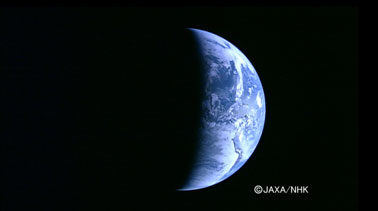A couple of days ago I visited a friend to see her and my – what would be the secular equivalent to a godson? My “Darwin-Son”? or “Dawkins-Son”? – well, to see her and her son (of whom I’m obivously quite fond, he’s two and a half and a very bright and lovable child). After some hours of playing ‘Make the Funny Noises’ and ‘Help me Catch the Red Balloon” the child was laid to sleep and we perused my friends library of science fiction series on DVD. I finally fell asleep to an episode of Regenesis (which is acutally quite good, only you shouldn’t try to watch all of it at once).
The next morning my friend invited her new neighbour for breakfast, which was even more fun than I’d initially thought, because said neighbour turned out to be an astrophysicist from Brazil – she does work on black holes and currently stays in Potsdam for some fellowship thing or something. So we talked about black holes during breakfast (actually I asked some naive or maybe genuinly stupid questions and got some clever answers, but that still counts as talking, right?) before she anncouned that she really wasn’t working on black holes at all – instead she said “I’m working on something really weird”.
That really cracked me up, because a star collapsing into a singularity is already pretty high on the list of weird things and it was funny that she could easily top that (is it too late for me to become an astrophysicist? The weirdest thing I see in my job is the CSS rendering of IE 6, and that’s rather more annoying than interesting).
The “really weird” thing is Gravastar Theory. I tried to read up a little on the theory – I read the original paper by Mazur and Mottola and naturally I didn’t understand a word (at least none with more than three letters), so I read another paper I’d found on the internet by two guys names Visser and Wiltshire, which (I think) discussed the merits and faults of the theory and which I didn’t really understand either, so I resorted to the Wikipedia entry which I mostly did understand but which is not particularly exhaustive and obviously lacking even by Wikipedias standards.
It may be weird, but it’ still interesting (and frankly so was my lecturer) . I should try and get another invitaton for breakfast.

